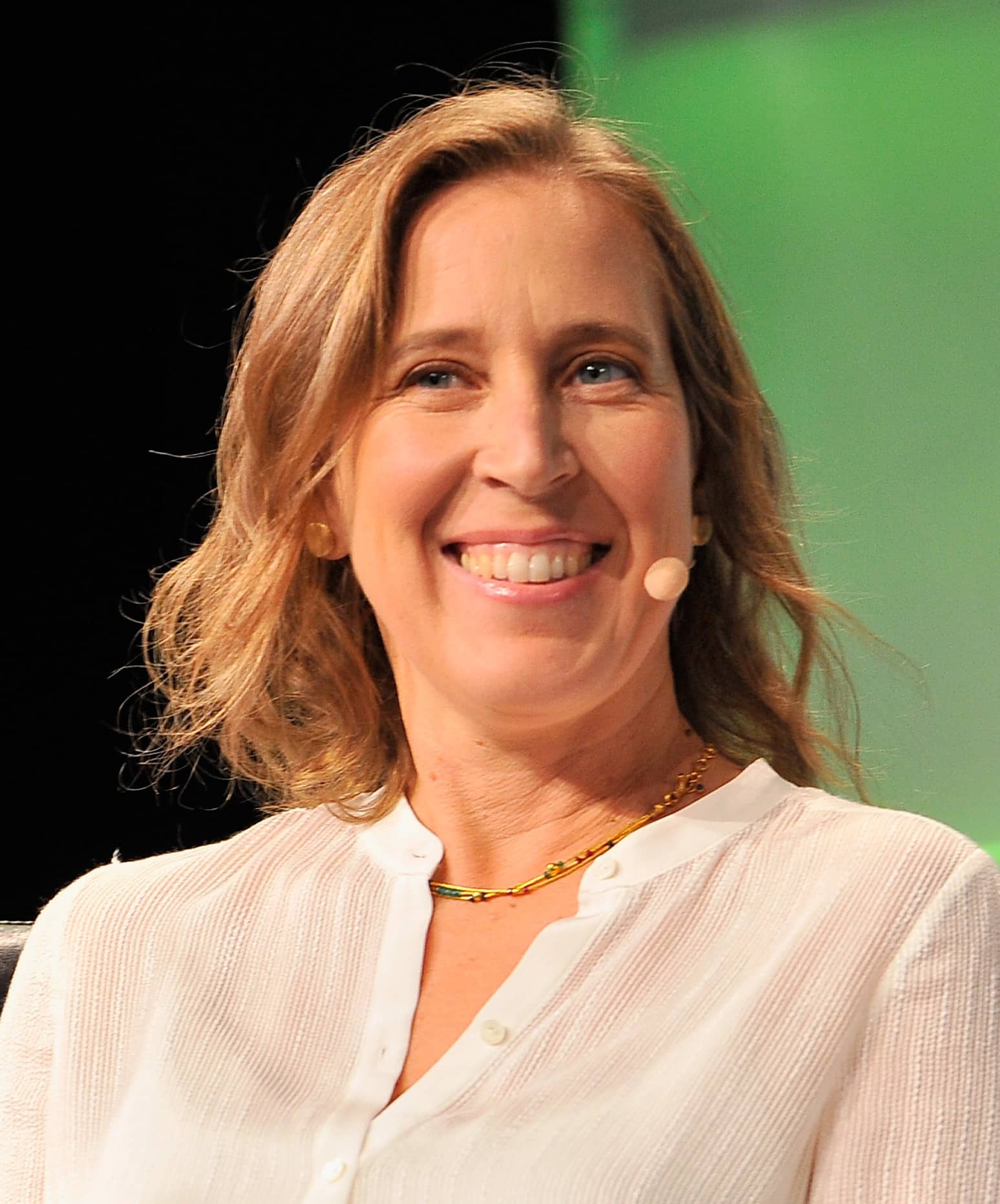One of the biggest barriers to gender equality in tech is the lack of role models – if women can’t see others excelling in their IT careers, why would they consider one? Well, let us introduce you to Susan Wojcicki, YouTube’s CEO. Susan was in the technology industry for over 20 years and is someone we should all be inspired by. In this article, we look at Susan’s story and journey to tech.

Credit: Getty Images for TechCrunch
Susan was born on the 5th July, 1968 in California. Her mother is Ester Wojcicki, a journalist and educator and her father Stanley is a Polish-American emeritus professor, working at Stanford University in the Physics Department until 2007. Wojcicki studied history and literature at Harvard University and planned to continue her studies to gain a PhD but changed her mind when she sparked an interest in technology.
Her career started in marketing for Intel in California, before becoming Google’s first ever marketing manager in 1999. At Google, Susan helped to create some of the most well-known aspects of the company we use every day; the logo, image search, Adwords and Google Analytics.
CEO of YouTube
Whilst working at Google, Susan was overseeing the company’s video service. In 2005, she noticed that YouTube, a small start up, was successfully competing in the video sharing space and subsequently recommended and managed the purchase of YouTube by Google in 2006 for $1.65 billion. In 2014, Wojcicki moved over to work on YouTube and was later named the company’s new CEO – a huge milestone in her career.
In Susan’s first year at YouTube, she was named the “most powerful woman on the internet” by TIME. Her leadership and technology knowledge was unrivalled and she was paving the way for female CEOs worldwide. For the last 8 years, Wojcicki has led YouTube through legal disputes, unhappy creators and bad press. YouTube is now the world’s second largest search engine, claiming to have more than 2.1 billion monthly users worldwide.
Leadership style
Susan Wojcicki was not a quiet leader and made a name for herself as an advocate for mothers. She herself was Google’s first ever employee to get pregnant, and had 5 children during her career, proving that motherhood should not stop anyone from pursuing a career in tech. She helped to get 18 weeks of paid maternity leave introduced at Google and continuously spoke out about equality for women in tech.
In 2017, Susan posted an article in response to a controversial memo circulated by a former Google employee arguing that the gender gap in tech was down to biological causes. In her short essay, she exposed her own experiences of gender bias in her career.
“I’ve had my abilities and commitment to my job questioned. I’ve been left out of key industry events and social gatherings. I’ve had meetings with external leaders where they primarily addressed the more junior male colleagues. I’ve had my comments frequently interrupted and my ideas ignored until they were rephrased by men. No matter how often this all happened, it still hurt.”
She emphasised the impact which the memo will have had on women worldwide, saying that it was a painful step back in the fight for gender equality.
“I thought about how the gender gap persists in tech despite declining in other STEM fields, how hard we’ve been working as an industry to reverse that trend, and how this was yet another discouraging signal to young women who aspire to study computer science.”
Women like Susan Wojcicki are hugely important tools in the battle to close the gender gap in tech. Ensuring role models like Susan are spoken about and celebrated allows women to feel inspired to take the leap into a career in which they will thrive. Susan was a great choice for YouTube’s CEO – the company now makes up 11.2% of Google’s total revenue – $28.8 billion in 2021. To finish this article, we’ll leave you with a quote from her:
“Whether it’s salary or a promotion or a job, I think it’s important for women to ask for what they think they deserve.”
Update 12/08/2024:
Susan Wojcicki, a pioneering force in the tech industry, was best known for her leadership at YouTube. After a groundbreaking career, Wojcicki stepped down as CEO in 2023, marking the end of an era at the company she helped transform. Tragically, she passed away in August 2024, leaving behind a legacy of championing gender equality and inspiring countless women in tech. Her contributions to both Google and YouTube, as well as her advocacy for women, will be remembered for generations.
Read hundreds of case studies from inspiring women in tech in our digital library.



